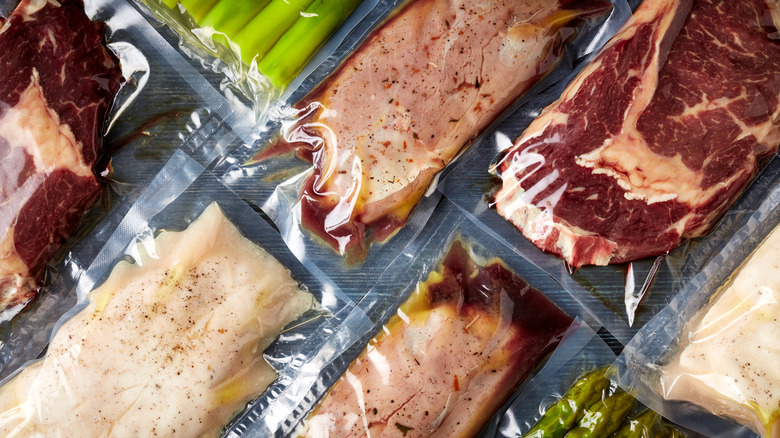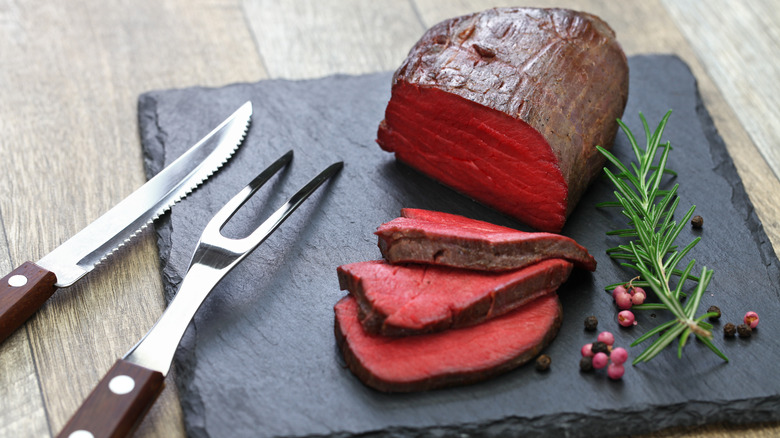The Real Reason Your Sous Vide Meat Is Rubbery
It's easy to get inspiration from contestants on "MasterChef" using the shiny sous vide machine to tenderize meat like nobody's business. It seems like a genius way of cooking restaurant-style meat at home. But when you actually get to trying it yourself at home, using the sous vide method of cooking can get a bit tricky.
Sous vide translates to "under vacuum" in French. Using the sous vide method of cooking means that you're sealing food in an airtight or vacuum-sealed bag and letting the bag of food slowly cook in water controlled at precise temperatures for a long period of time (via Bon Appétit). There are many benefits of using this method of cooking, and it helps that you can easily replace a fancy sous vide machine with a ziplock bag, a thermometer, and a pot of water at home (via Martha Stewart).
For one, it's low maintenance (via MasterClass). You can simply pop a bag of protein or veggies covered in a marinade into the water and pretty much forget about it. Since the food doesn't directly come into contact with heat and is cooked at a low temperature in water, using the sous vide method is about as sure a cooking method you can use to not overcook food. You could also pop several bags of different foods in the same pot, so when it comes to meal prep, using the sous vide method can be a dream.
Unrendered fat will make meat rubbery
However, while it's nearly impossible to overcook food, it is entirely possible for the protein to get rubbery when using sous vide. But good news: It's nothing a quick kitchen hack can't fix.
While the sous vide method is a pretty foolproof cooking technique, ending up with a rubbery piece of meat is entirely possible and will leave you scratching your head for a quick fix. Delishably explains that while the use of low temperatures to cook protein is what makes the sous vide method so great, it can also cause meats to turn out rubbery. Normally, proteins with large portions of fat need high heat for the fat to start rendering and consequently become tender. When you pop a raw piece of meat that has a lot of fat in a sous vide machine, the low temperature of the water will cause the meat to stay unrendered and become rubbery.
The solution is a hot sear for the fat in your protein before you pop it in an airtight bag to sous vide. Searing the meat first will render the fat, and since the water in the sous vide will be temperature controlled, you won't have to worry about overcooking the meat in the sous vide machine, either.

